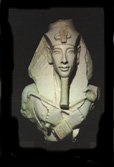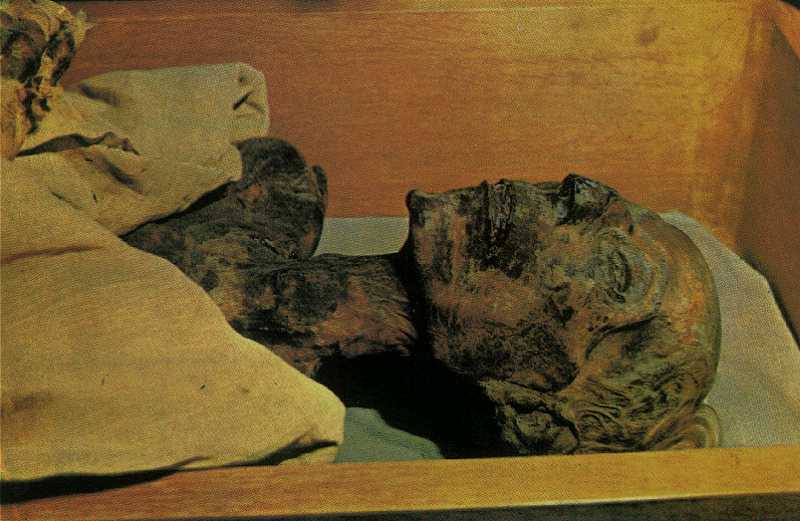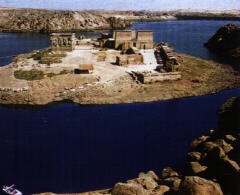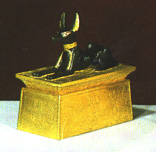 |
ANUBIS
Jackel Box XVIII Dynasty. Guardian god of the west. Tomb of King Tut. Cairo Museum. |
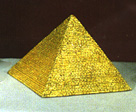 |
GIZA PYRAMID
VII Dynasty. Modeled on the Great Pyramids of Giza. |
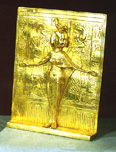 |
SELKET RELIEF
XVII Dynasty. Relief based on a statue from the tomb of Tutankhamen in the Valley of the Kings. She was a Goddess of Magic, especially magical protection against scorpion bites -- as shown in her scorpion headdress. Selket was one of the four goddesses guarding the shrine of the canopic jars containing the vital organs of the king. She is also identified with the sun's scorching heat. The original statue is now in the Cairo Museum. |
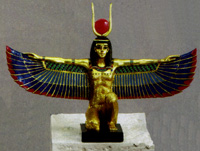 |
EGYPTIAN WINGED ISIS
From the XVIII Dynasty. Egyptians saw Isis as an enchantress and example of supreme devotion to her husband. After the death of Osiris, she seeks and finds his body and is inconsolable with grief. In some statues, she takes human form, stretching forward her arms from which grow wings to surround Osiris. She then acts as a guard over him. On the Stele of Amene-mose in the Louvre Museum. Isis is pictured as a kite shading the god with her plumage, the breeze created by her wings providing breath for Osiris. Of cultured marble, gold-leafed & hand-detailed. |
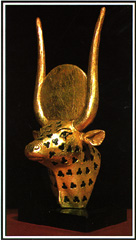 |
The GODDESS of the SKY
The cow goddess was used as side-pieces on each side of the second of three ritual couches in the Antechamber of Tutankahman's tomb. The cow-goddess is recognized as an image of Mehat-Weret, whose name means "the great flood". In the pyramid era, Mehat-Weret represents the waterways in the heavens sailed upon by the sun god and the king. Of cultured marble, gold-leafed & hand-detailed. |
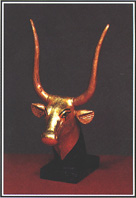 |
HATHOR GODDESS of the WEST
On a stand in the treasury of Tutankahman was a splendid cow head representing Hathor matriarchal goddess of the western mountains of Thebes, where "to whose womb her children returned each evening to be born again every morning with the rising of the sun". She was 3 feet high overall, partially gilded and partially black resin and her long, elegant horns were covered with thin copper sheeting. Made of cultured marble, gold-leafed & hand-detailed. |
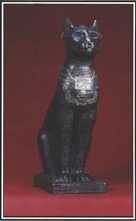 |
CAT GODDESS BASTET
British Museum. At about 1000 BC the representation of Bastet as a cat became common (earlier versions were lion imagery). She was the daughter of Ra, the sun god and she represented the power of the sun to ripen crops. The most important cult center of this goddess was at Bubastis, and the kings of the 22nd Dynasty built magnificent temples for her. At these temples, dedicated to her and, at a later period, sacred cats were bred in the temples. Cemeteries of cats have been excavated at Bubastis and other sites. The well-wrapped mummies reveal the universal affection of the ancient Egyptians for this sacred creature. The yearly festival in honor of Bastet was one of the most popular in all Egypt. Crowds came to Bubastis to celebrate the feast of the goddess with music, licentious dancing and unrestrained wine-drinking. Of composition stone. |
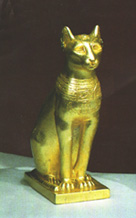 |
BASTET as CAT
Late Period. From Bubastis. Daughter of the sun. Bastet is usually shown as a cat, her appearance in this life; or as a cat-headed woman, her appearance in the afterlife. In the delta region, Bastet was the goddess of pleasure, of music, dance and drinking -- roles usually assigned to Hathor elsewhere. Bastet was the personification of the ordinary house cat whose origins are in ancient Egypt. Now in the Ashmoleun Museum, Oxford. |
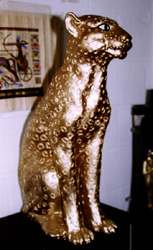 |
RAMSES III SACRED LEOPARD
Two trained hunting leopards were given to him by an African King. He loved them so much, he ordered statues made and to be with him in his tomb. Made of Jessco. |
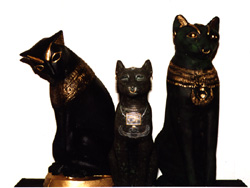 |
BASTET (Cat Goddess)
Made of Jessco. Bastet in cultured marble, approximately 2 feet tall. |
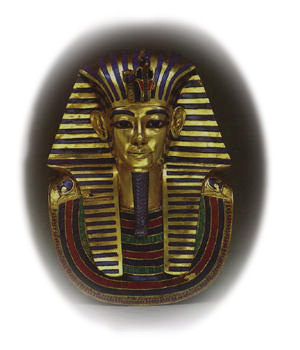 |
King Tutankamen
His chamber is one of the only chambers that was found un-robbed or with every little piece of Treasure the pharoes recorded keeping it with this young king! In the meseum even his under-pants are available to see!! :-> (not joking). |
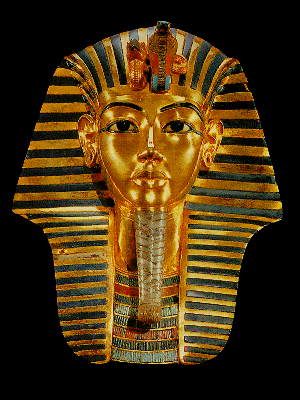
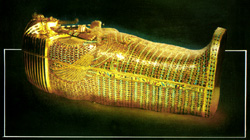
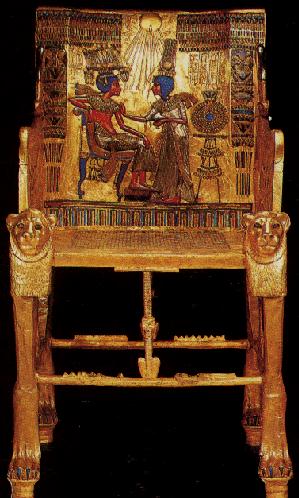
 |
Ramsess II was the greatest pharoe in the New Kingdom. He was the first ruler who signed a peace agreement between him and the Turks after he invaded the Levant and Syria. He was the ruler of the Empire of Kept (then Egypt). |
